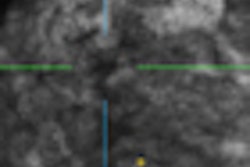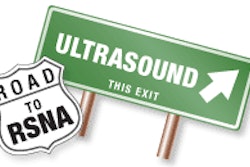In their study, Dr. Wing-Fai Au and colleagues included 66 patients with 70 solid nodules (mean size, 13 mm) who had been referred for ultrasound biopsy. Au's team classified ultrasound BI-RADS assessments of 3 as benign; BI-RADS scores of 4a or higher were considered malignant.
The group found 46 benign lesions and 24 cancers, and the elasticity values for the benign masses were significantly lower than those of the cancers (p < 0.001). Compared with ultrasound alone, combining ultrasound and elastography improved specificity from 32.6% to 87%, positive predictive value from 44% to 79%, and accuracy from 56% to 90%. Sensitivity and negative predictive value dropped from 100% to 96% and 97.5%, respectively, according to the researchers.
The study findings suggest that BI-RADS 4a masses with lower elastography values could be downgraded to BI-RADS 3 and followed with short-term ultrasound -- avoiding core biopsy, the group concluded.



















